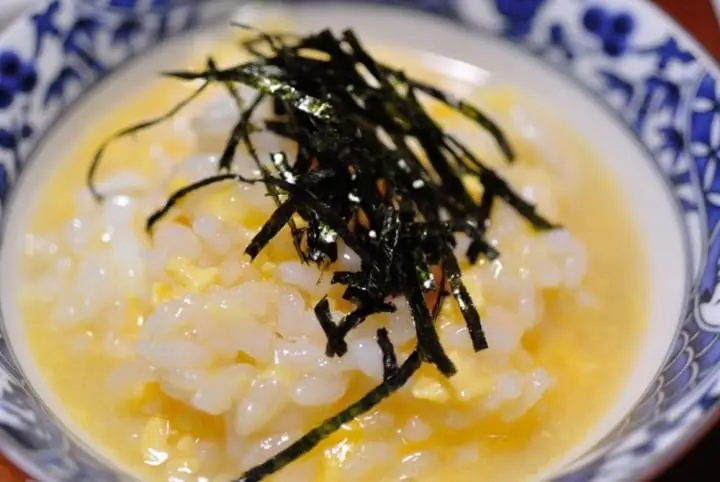Zosui and Ojiya - Japanese Encyclopedia

This article features basic information about zosui and ojiya, two rice dishes you might hear of during your trip to Japan. Zosui and ojiya are hearty rice porridges, which are the best dishes to eat during the cold winter.
Japan, where rice has been the main staple food for centuries, offers a wide variety of rice dishes compared to other countries. Onigiri (rice ball) and Donburi (rice bowl dish) are two of these representative rice dishes.
But what other types of rice-based dishes are available? Probably some that most of the international visitors hear by chance while staying in Japan are zosui and ojiya. Those two rice dishes are really popular among Japanese people. Let's find out what they are like in this article.
What Are Zosui and Ojiya?

Zosui and Ojiya have a lot in common with one another, especially in terms of how they are cooked; both are dishes containing simmered cooked rice and soup. However, even those dishes which have been made from uncooked rice or from rice that has been stewed in soup for a long time may also be called zosui or ojiya, so the definition is not that clear.
In any case, both zosui and ojiya are prepared with delicious gourmet soups and are the best food to eat during Japan's cold winters. Not only do they taste fabulous, but they also really help to warm you up.
In Japan, zosui and ojiya are usually eaten as hotpot cuisine, which is the general term for stew-like dishes cooked in a big pot. Zosui and ojiya are prepared in the same pot with the remaining soup at the end.
After eating all of the stewed ingredients, there is only broth left in the pot. To this broth, pre-cooked rice is added and then simmered, and green onions and eggs are added to it before it is finally served. It really is a simple dish, isn't it?
There really aren't any significant differences between zosui and ojiya; it is said that the dish made from cooked rice added to broth is called zosui, while the unwashed and cooked (so slightly sticky) rice dish is called ojiya. But as we mentioned, the definition of these dishes is not set in stone. Moreover, when these dishes are made at home, it might not be clear how the rice was prepared as it could be made with leftovers.
Where Can You Eat Zosui and Ojiya?

Actually, restaurants which serve zosui and ojiya itself are pretty hard to find.
If you want to eat zosui and ojiya in Japan, you should try a restaurant which serves hotpot cuisine.
So, going to a Izakaya (Japanese bar) where you can have alcohol and dishes along with drinks, or going to specialized hotpot restaurants are the best options to choose from. However, please be careful because there are many restaurants which prepare udon or ramen noodles in the leftover broth rather than cooked rice.
Usually, the rice is first rinsed in order to remove the stickiness caused by excess starch, but in restaurants, customers can skip this step as the cooked rice for the leftover broth has already been prepared by the staff. However, at some self-serve hotpot restaurants, you may need to do this step yourself.
The process of making zosui or ojiya at a self-serve restaurant is simple enough: add the rice to the remaining broth and allow it to slowly simmer for a while. Then beat an egg, pour it into the rice and broth mixture and allow it to cook until you feel it is the right consistency for yourself (some prefer almost raw eggs, other well cooked), and then it is ready to eat.
You can also sprinkle green onions or shredded dried seaweed over the dish as you like.
In Conclusion
In Japan, there is the custom of cooking zosui or ojiya and eating them when you catch a cold in order to warm your body up. This is because rice stewed with eggs, which are nutritious themselves, is easy to digest and very healthy. It is the best food to eat when you are ill.
Zosui and ojiya are not only delicious but also have great health benefits to them as well. When you are visiting Japan, why not give one of these comfort foods a try?
日本への訪日外国人の方が、もっと増えますように!

































![[2026] Top 5 Strawberry Picking Spots in Tokushima, Naruto| Farms and Access Guide for January to May](https://resources.matcha-jp.com/resize/720x2000/2025/03/06-227165.webp)



